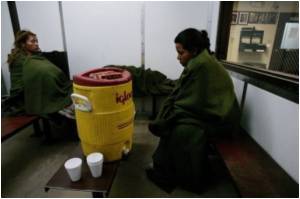Non-Suicidal Self-injury (NSSI) is typically defined as the deliberate, self-inflicted destruction of body tissue without suicidal intent and for purposes not socially-sanctioned.

In an article published this week in the open-access journal PLoS Medicine, Janis Whitlock (Cornell University, NY) discusses the epidemiology and care of adolescents undertaking NSSI. Whitlock discusses the research so far conducted on NSSI and comments on important questions surrounding intentional self-harm such as, why do youth self-injure? What is the relationship between NSSI and suicide? How do we detect NSSI and how is it best treated?
The author concludes that "NSSI assessment should be standard practice in medical settings. Because NSSI research is nascent, unanswered research questions abound. Those most pressing for clinicians and allied medical health professionals include (a) discerning individuals with NSSI history at elevated risk for suicide… (b) effective treatment regimes, (c) effective prevention strategies in school and community settings, and (d) assessment and referral protocols likely to result in effective treatment and abatement of NSSI behavior."
Source-Eurekalert
RAS










